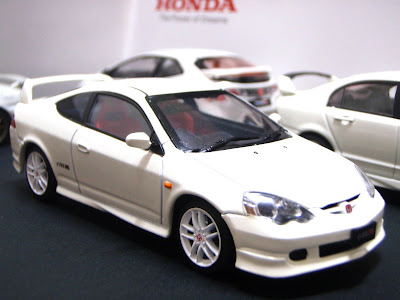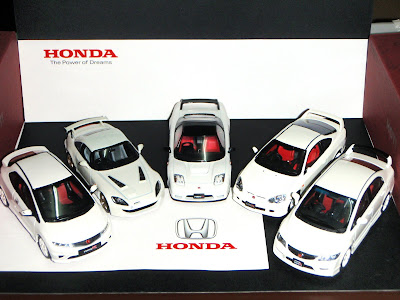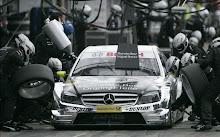I'm admiring Honda's dedication, commitment, on going effort and time to create some of the finest race machines out there. All these success come from the word "Dream". Let put the sequence together: dream -> create*** -> test*** -> race = success.
Thus, their "Power of Dream" had attracted me to start collecting some of the Type R/ Mugen models available out there. Now I'm trying very hard to impart the great spirit of late Mr.Soichiro Honda to fulfill some of my personal goals.
It took a while to bring all these models together. So there you go, the dream machines...

























































